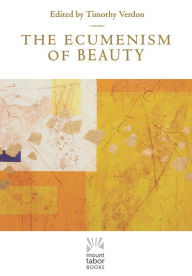
The Ecumenism of Beauty
How do we make sense of visual arts in the church and in the history of the Christian church? There has been a bit of rediscovery of this question and answers to the issue by both Catholics and Protestants, Orthodox and Anglican. This new book, The Ecumenism of Beauty, edited by Timothy Verdon captures the essence of seeing the beauty of art in the church as a vehicle to understand God's character and man's genius. The various contributors to this volume write with a vigor and wisdom that is rarely seen, commenting on aesthetics in Calvin, the artist as contemplative, and the way in which the Church of the Transfiguration in Orleans, Massachusetts bears together both the simplicity and brilliance of art in a house of worship. Although the book is short, it is rich with pictures of art past and present, and the writing points our gaze toward the heavens as we contemplate both God and beauty. With a learned introduction by Monsignor Timothy Verdon, an intelligent art historian, the book gives you something to appreciate it about the both the artistic creations in churches and cathedrals, and also the way they point beyond themselves to the great Story.
As a longtime member of the Reformed tradition, the chapter on aesthetics and Calvin by Jerome Cottin was most illuminating and helpfully nuanced. In one part, Cottin writes, "First, the "image' that Calvin denounced was not the modern, humanistic aesthetic image, but rather the image of medieval devotion: the image as support for a piety veined with superstition, which ascribed miraculous power to images,..." (2). We often see Calvin as this austere man with no appreciation for the arts as a whole, but this was not the case. Cottin carefully delineates Calvin's argument against devotional images as a response against those who would see this visual artifacts as somehow carrying within themselves some magical or transformative capacity. Later, Cottin points to Calvin's paradoxical stance in that he "rejects images in their concrete three-dimensionality yet lays claim to them as being more fit than even the Word is to express God's glory and our own expectation of the future Kingdom." (6) Calvin saw the prophets of the OT as using visual images to describe GOd's character, and as such they were not promoting idolatry but seeking to capture the immensity of God's character.
The chapter chronicling the Church of the Transfiguration in Orleans, Massachusetts was a beautiful description of the history and foundation of a remarkable place. What got my attention was the purpose of art in the worship setting. Martin Shannon writes, "through its stone carved liturgical furnishings, frescoes, mosaics, and sculptures, it portrays the history of salvation as recorded in the Bible, for the Book of Genesis in the atrium to the Book of Revelation in the apse." (71) From the pilgrimage of the Redeemed to the cross, each visual artwork depicts God's saving faithfulness from generation to generation.
I hope you enjoy this book as much as I did.
Thanks to Paraclete Press and Mount Tabor Books for the copy of this book in exchange for an honest review.
Comments
Post a Comment